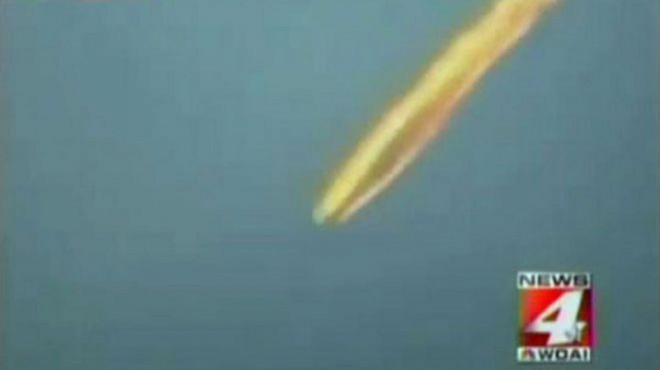Texas Fireballs Sail Through Daytime Sky, NASA Begins Research Into Phenomenon [VIDEO]

A giant fireball streaked across the sky in the middle of the day, much to the wonder and awe of the Texans who witnessed the event.
While this could be a conceived cataclysmic event or UFOs, there is actually a rare scientific reason for it.
NASA has observed a consistent uptick in the number of fireballs for past 30 years, reported Live Science. Fireballs are meteors that glow brighter than the planets they are approaching. These fireballs approached Earth's atmosphere during the spring when they will appear brighter as they zoom across the sky, compared to other times of year.
The size of the object appeared similar to Venus, which was higher in the sky, the reporting witness stated, according to the Examiner. The object was orange in color and pulsated in brightness. The object seemed to be moving north-northwest and eventually faded from view.
Another witness said the shape was indiscernible, but the lights were very bright. A few seconds later the object makes a barrel roll, and dissipates into what it looked like the first time we saw it - a singular bright light - then the object vanished with no trace, reported the Examiner.
However, scientists are not exactly sure why the spring months cause
There are two peaks: one around February and the other at the end of March and early April, said Bill Cooke, head of NASA's Meteoroid Environment Office. And this remains a mystery.
To get to the bottom of the mystery, Cooke and his team of NASA researchers set up meteor cameras around the United States. They used these cameras to triangulate the trajectories of meteors, reported Live Science.
The scientists determined that the event that was recorded by a television camera crew indicates that the fireballs could have fallen from a comet.
The [spring fireballs'] orbits indicate they come from the main asteroid belt, said Cooke. A lot of the smaller meteors in the fall come from comets, which are made of icy bits of dust, and they don't last long in the atmosphere. Those ones are generally not big enough to make fireballs.
Once a sufficient amount of data is collected regarding the fireballs, the NASA researcher will attempt to map out a pattern and hopefully reveal the best time of the year to view the fireballs.
It appears that a lot of the stuff out there in the asteroid belt is clumping up in the springtime more than other times of the year, said Cooke.
© Copyright IBTimes 2024. All rights reserved.





















